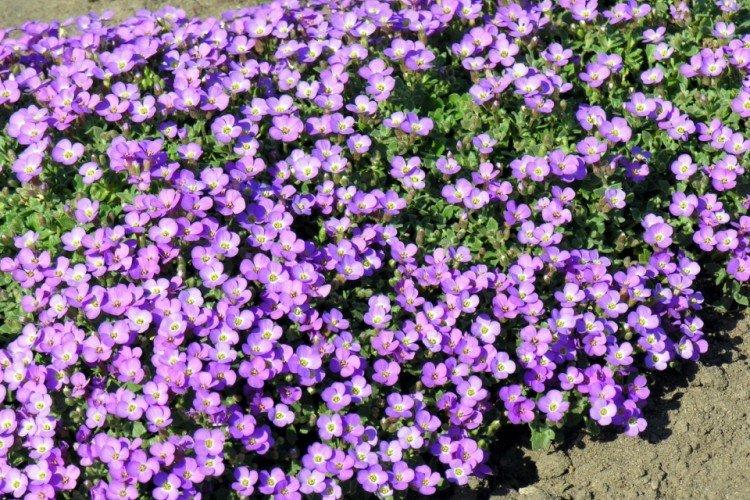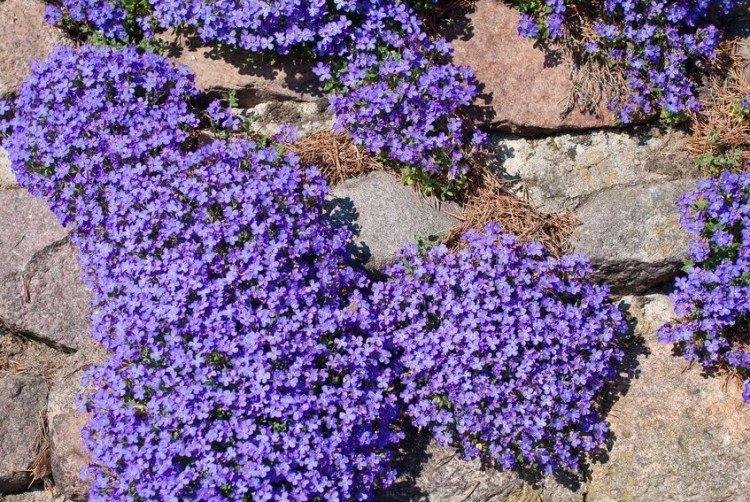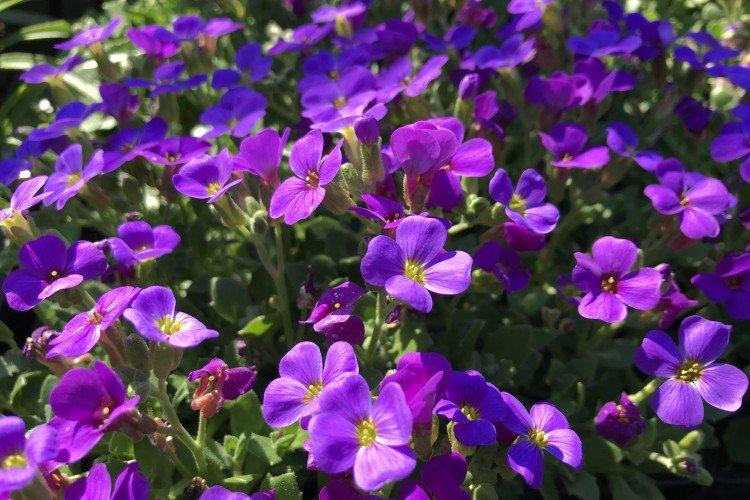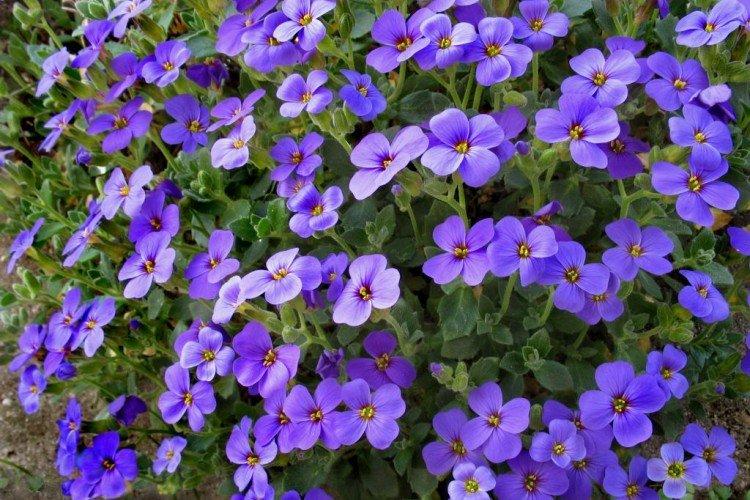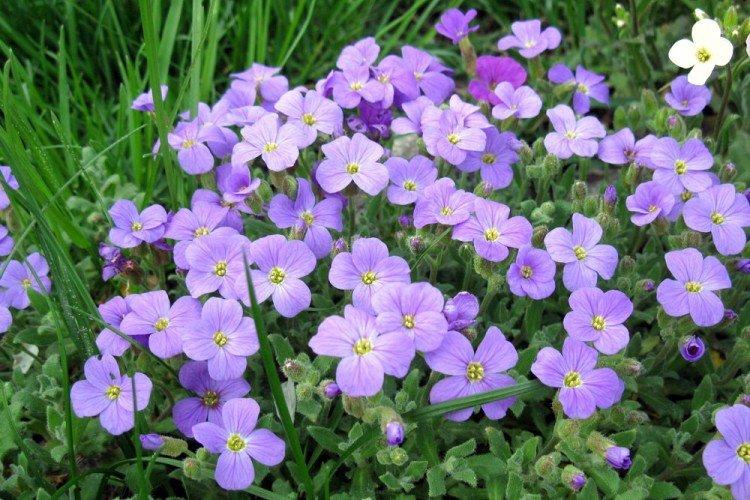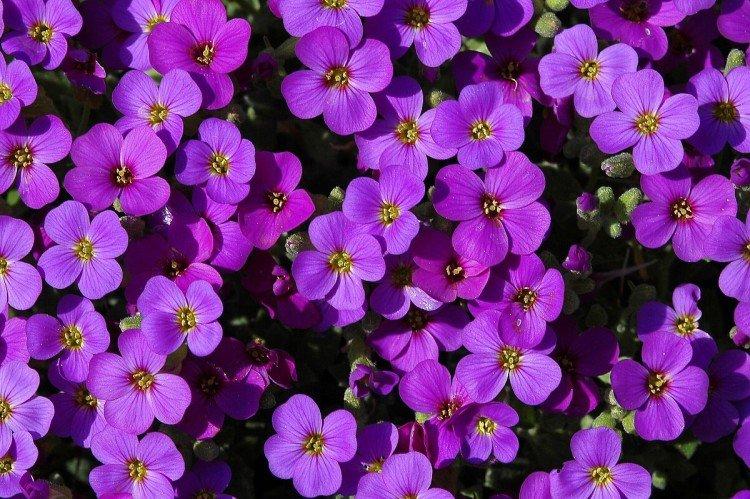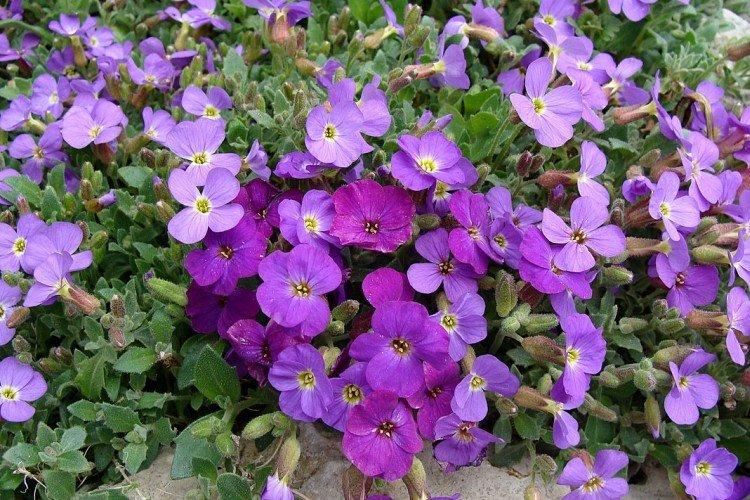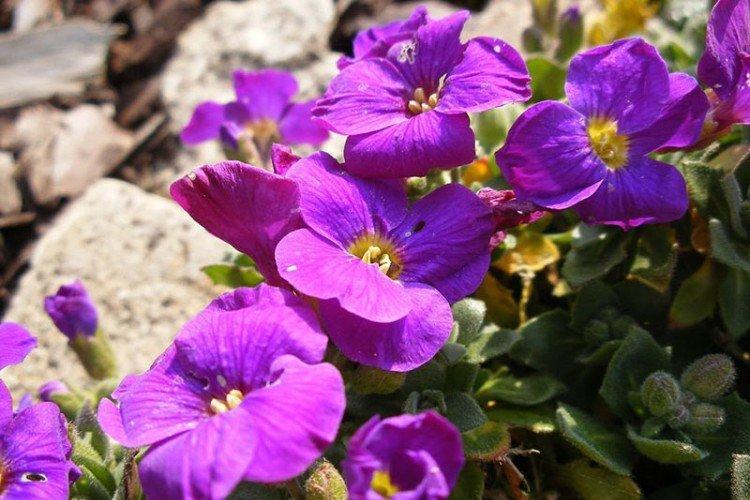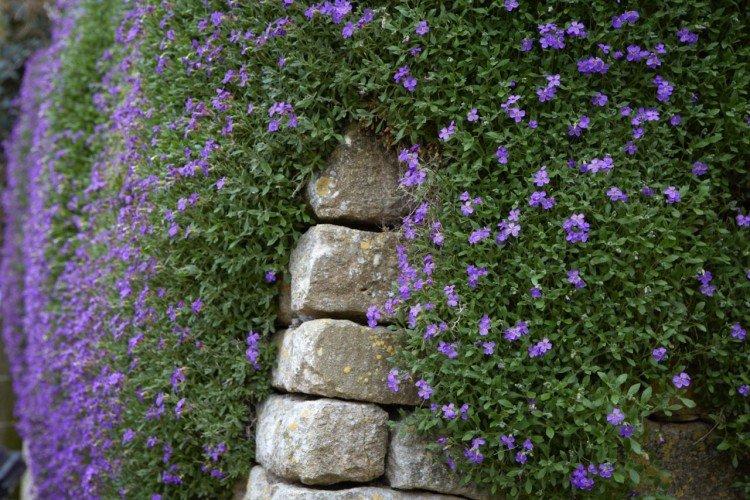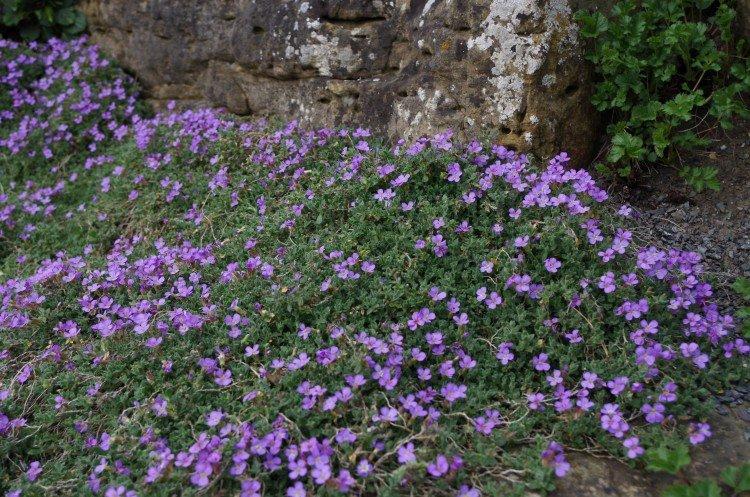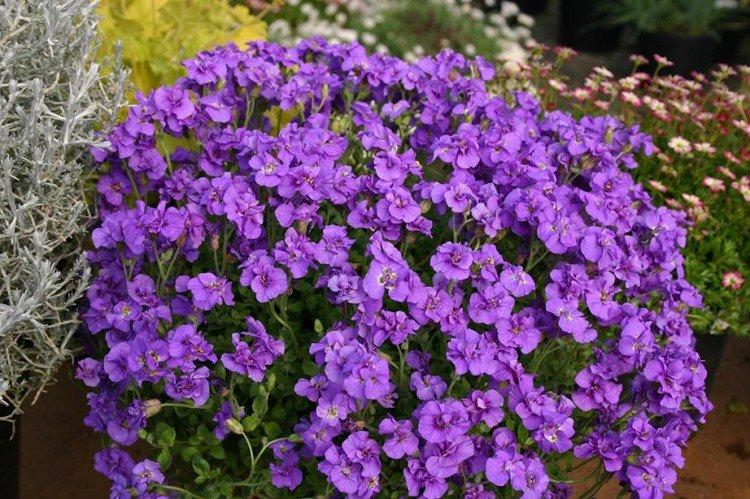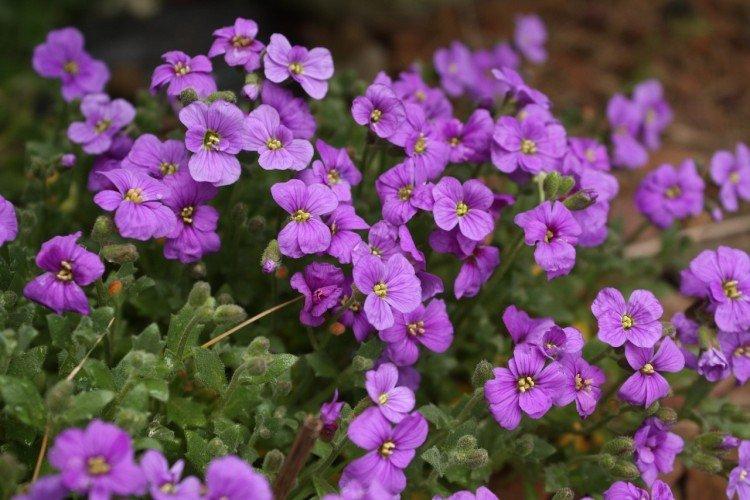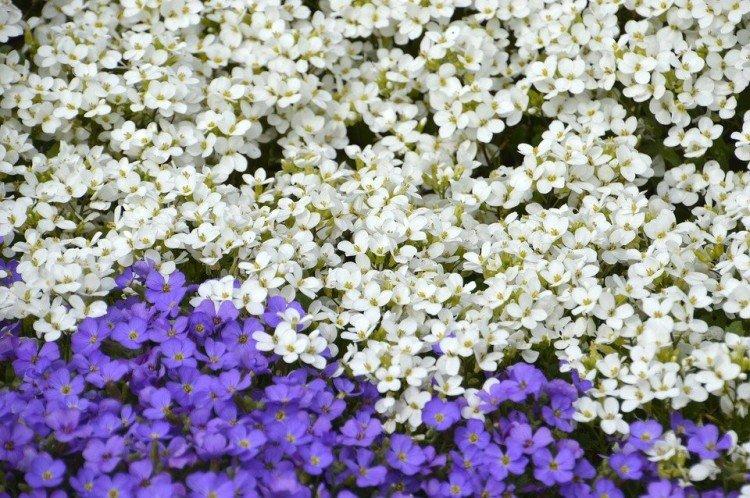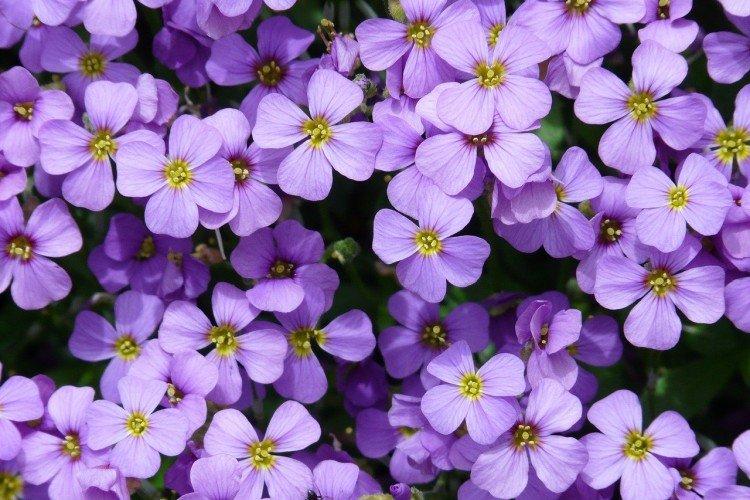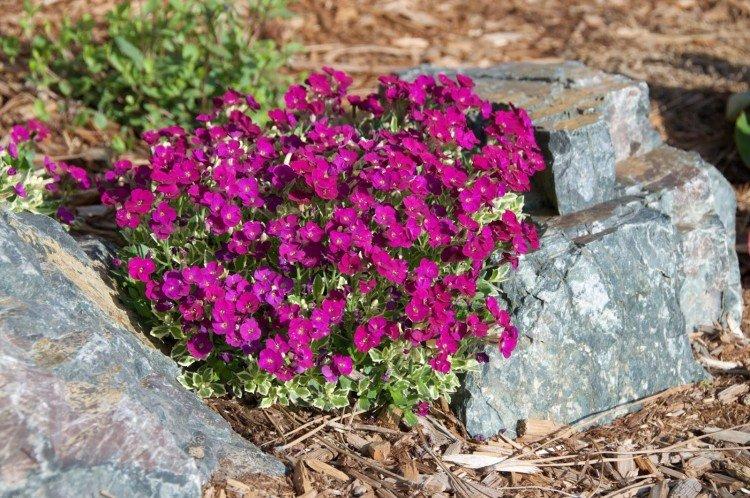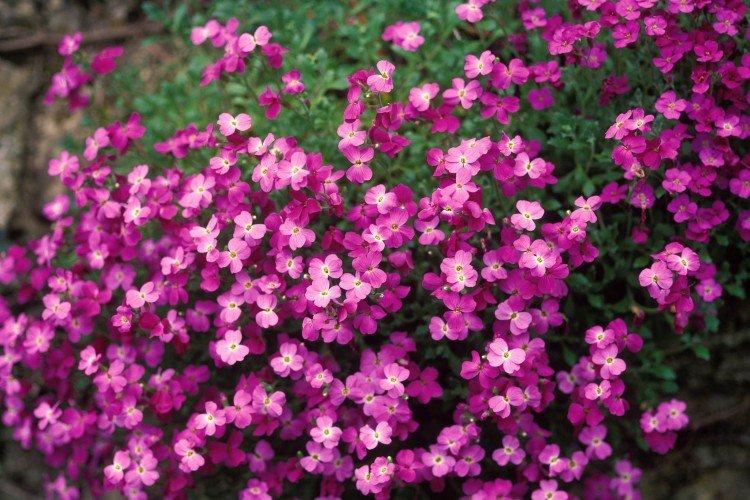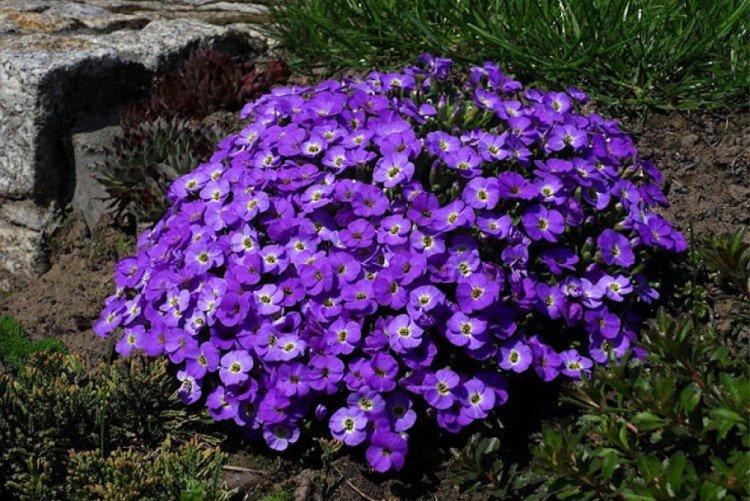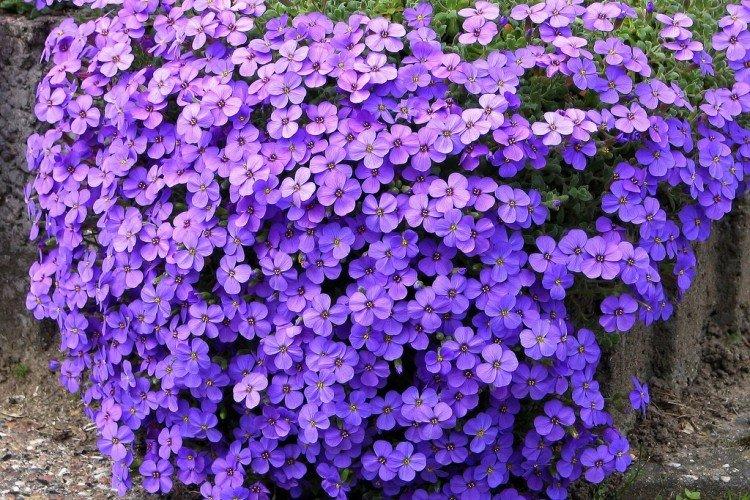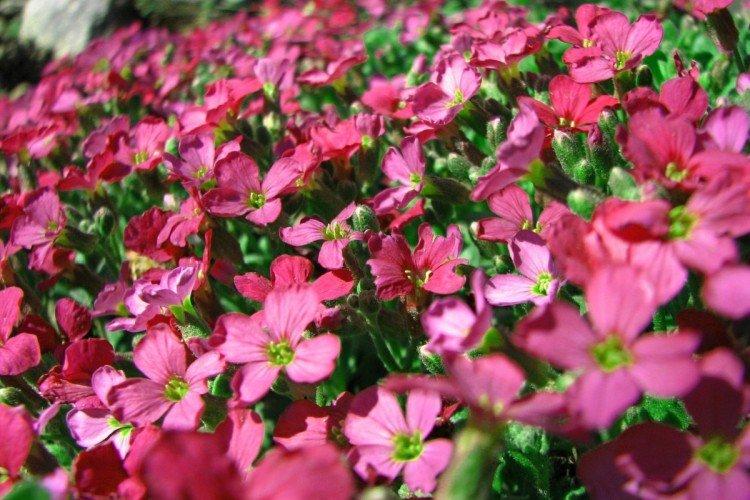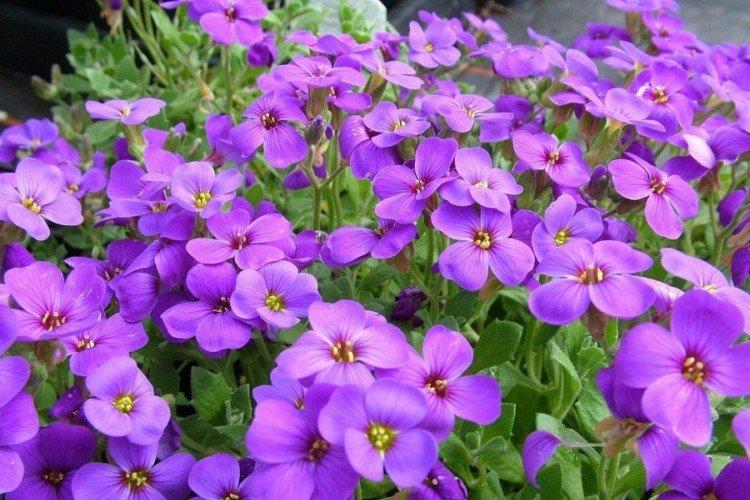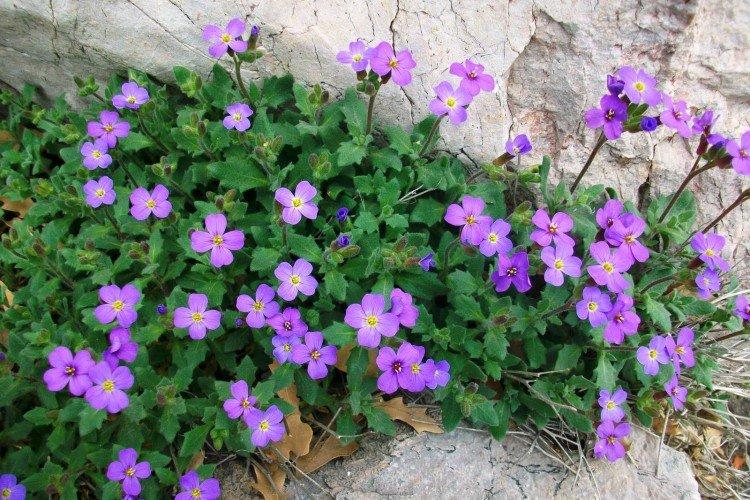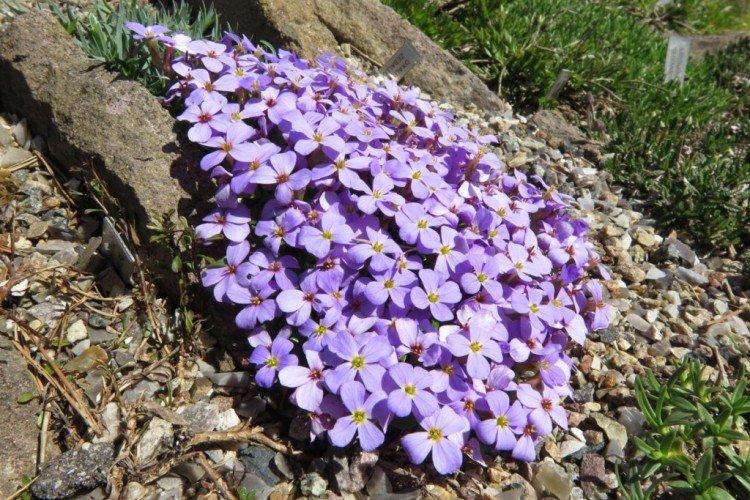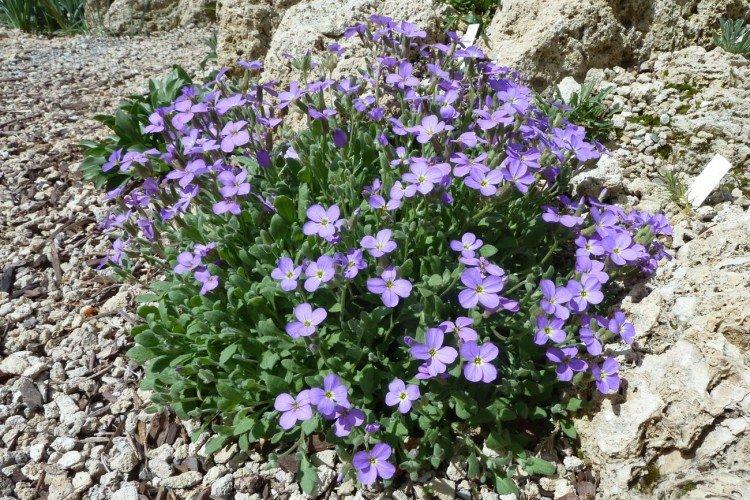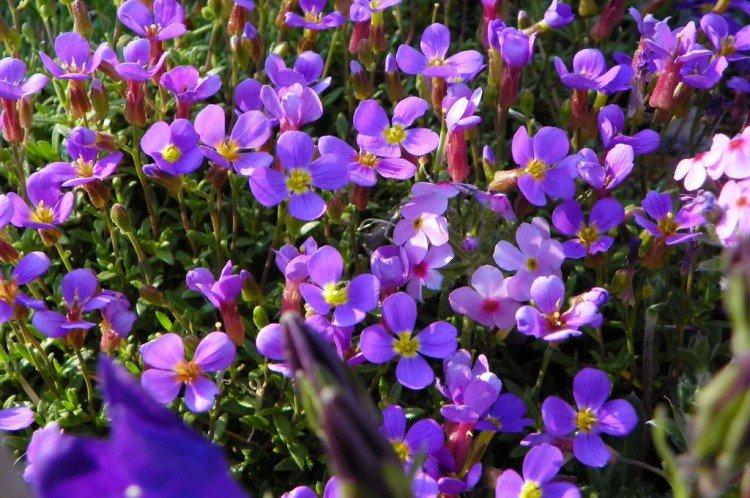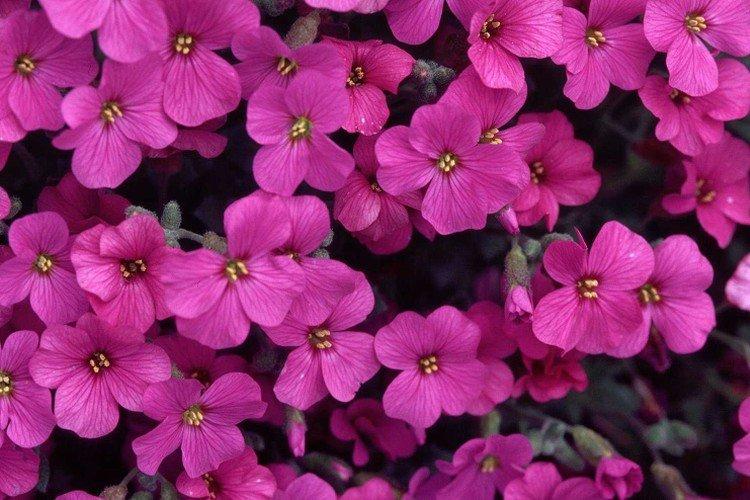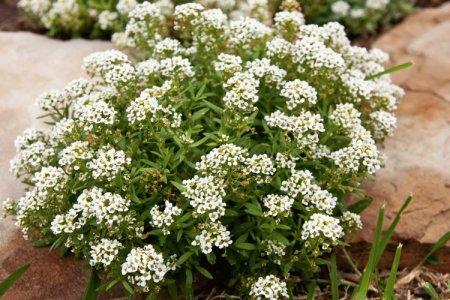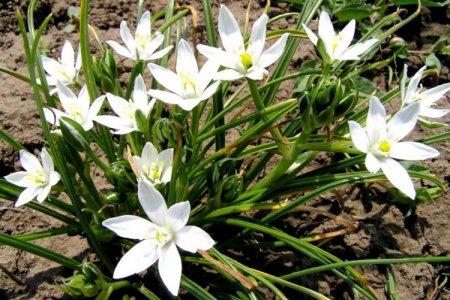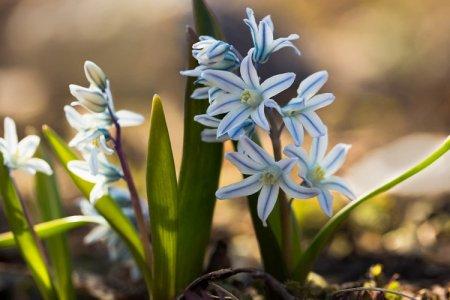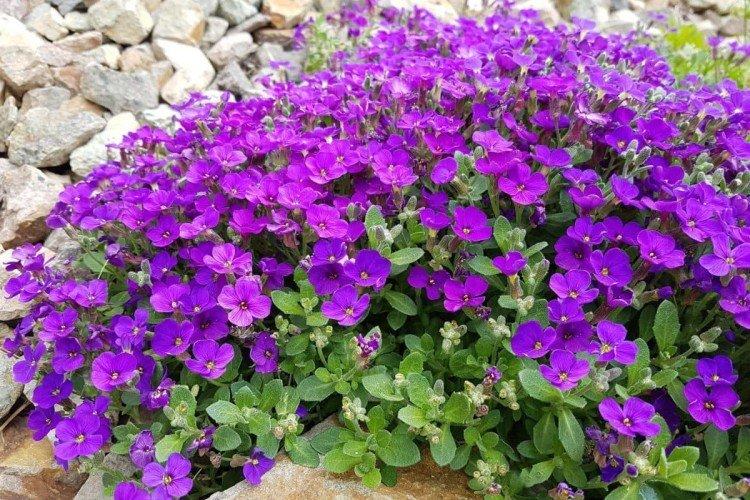
Behind the fancy name of Aubriet is a flower that you probably often see in gardens and flower beds. Its shades of pink and purple are so vibrant that they seem to glow in the dark!
general information
Aubrieta is a flowering perennial native to the southern regions of Europe, Asia and America. It belongs to cabbage and in the wild most often grows near water or in rocky areas. Small pubescent leaves can be solid or carved, and are distinguished by a bluish tint.
Small creeping shoots are so densely covered with flowers that the greenery is almost invisible. Aubriet tenaciously clings to any foundations, so it can grow even on vertical walls. The height of the stems rarely exceeds 15 cm. Aubriet blooms in May and blooms for up to 1.5 months.
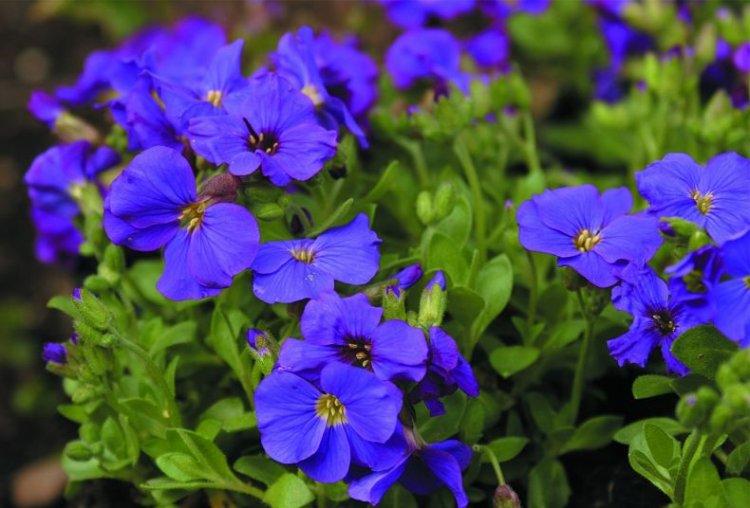
Types of aubriets
There are not many types of aubriets that make sense to grow in the garden. Let's talk about the main ones!
Cultural obrieta
This is the main and most diverse category, which includes all decorative varieties and hybrids. Between themselves, they mainly differ in shades. The height of the bushes is about 20 cm, and the diameter of the flowers is 1 cm.

Graying aubriet
It is a thermophilic variety with densely pubescent shoots and leaves that do appear gray. Small buds are painted in a light lilac color.
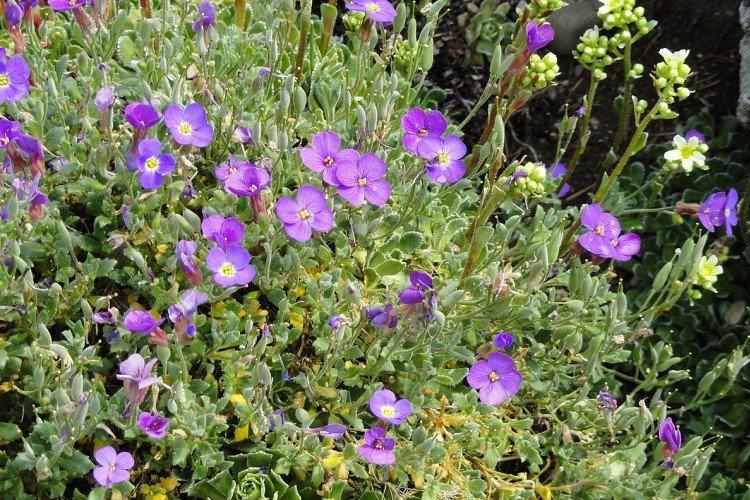
Deltoid Aubriet
It is a southern variety native to Greece and some Asian regions. A compact perennial grows up to 15 cm and is distinguished by a bluish shade of leaves with purple racemose inflorescences.
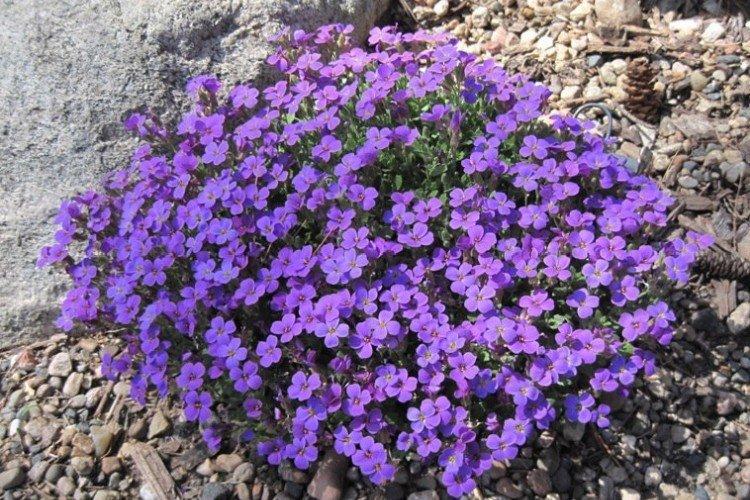
Columnar Aubriet
Unlike most species, columnar aubriets have very powerful thick shoots. Red or pink buds are also relatively large.
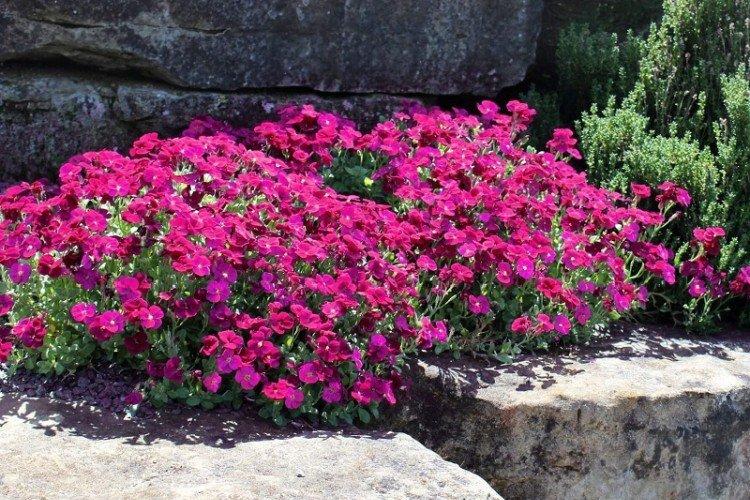
Graceful Aubriet
Very beautiful and very small species up to 10 cm in height. She has weak and thin, but surprisingly graceful shoots that form a dense carpet.
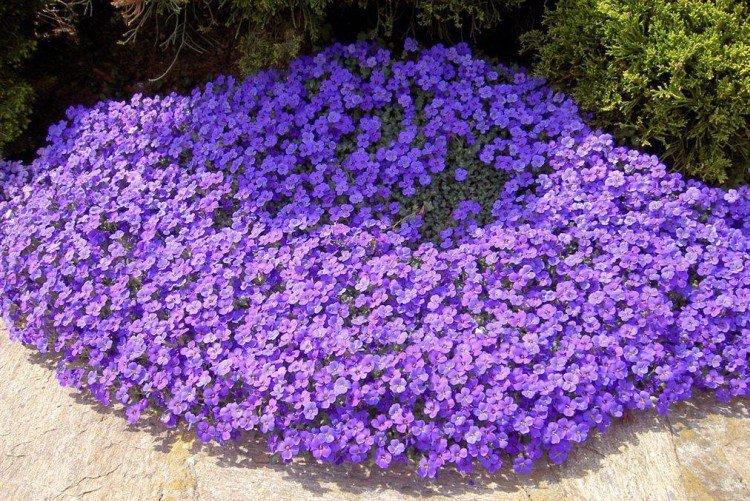
Aubrieta Columka
This species is interesting for the presence of pubescence on the leaves and shoots. And also large, but unusually pale purple flowers.
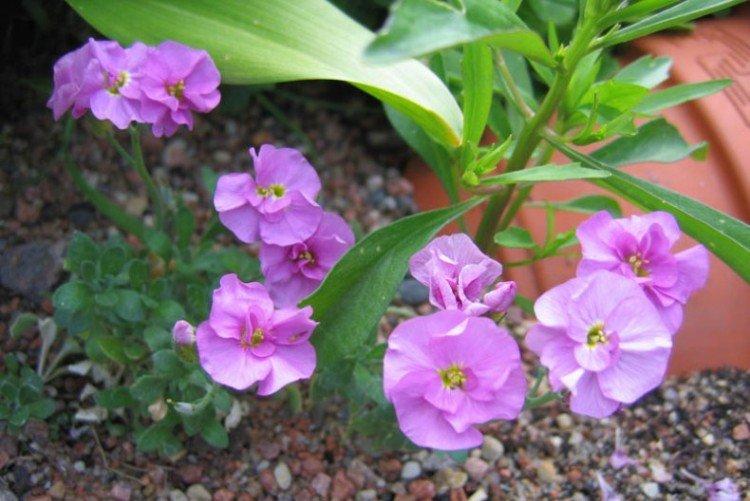
Shaving care
Caring for your shaved is extremely simple, but it must be regular. This is not a flower to plant and forget. But its beauty is definitely worth it!
Temperature and lighting
Young seedlings germinate at a temperature of about +20 degrees. In the future, there will be no problems with the temperature regime. But choose a well-lit and always well-ventilated area.
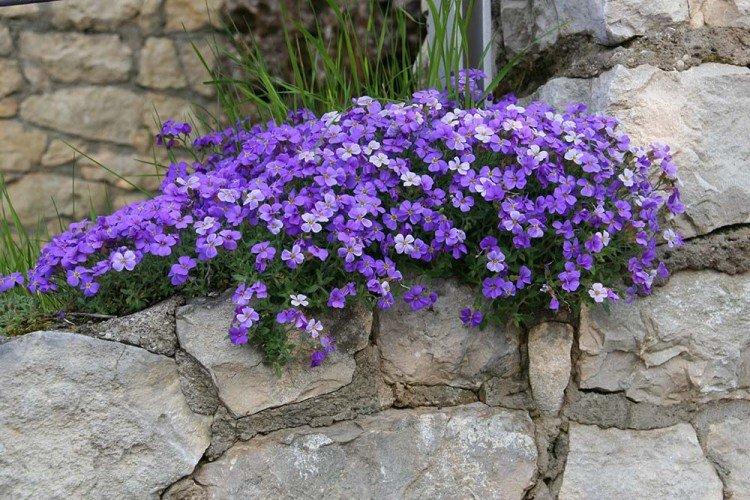
Watering
Aubrieta does not tolerate both stagnant moisture and drought, so you will have to work with watering. We advise you to water such ground cover plants by sprinkling, often and not too abundantly. Cover the soil with sand and renew it in the spring.
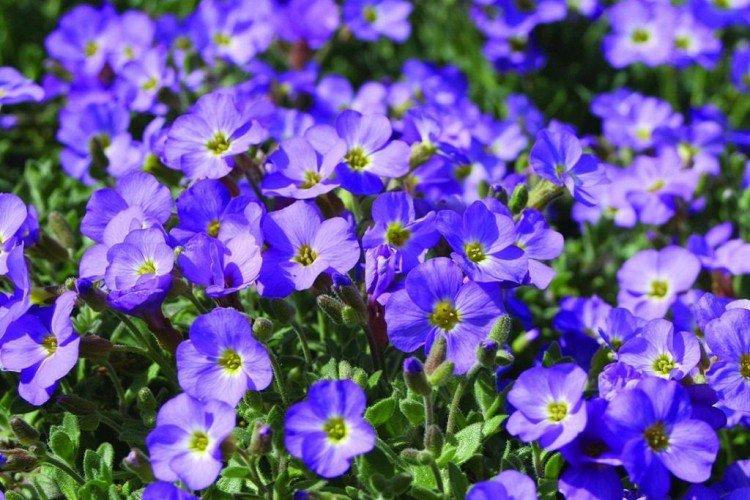
The soil
First of all, the soil should be loose, and only then everything else. Water should not be stagnant under the green carpet. Too dense and clayey soils are best dug up with sand and gravel. Also, neutralize too acidic soil with lime or dolomite flour.
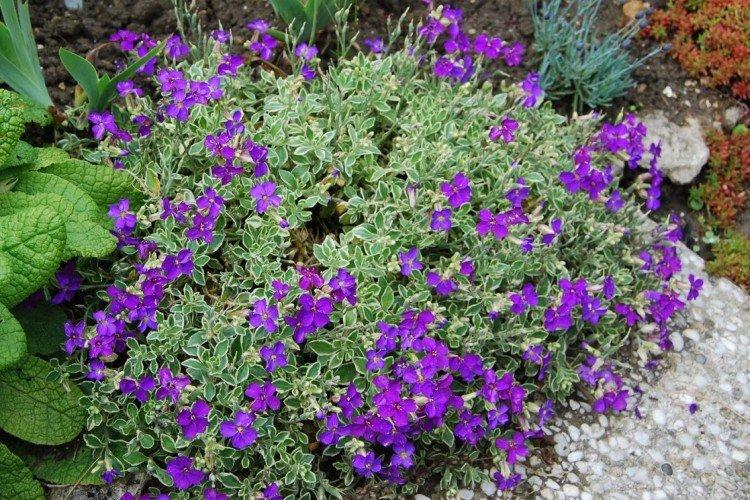
Fertilizers and feeding
With all the intensity of flowering, the aubriet almost does not need feeding. You can literally add potassium or ash 1-2 times a season, but not too intensively. An oversupply of fertilizer impairs flowering and promotes fungal growth.
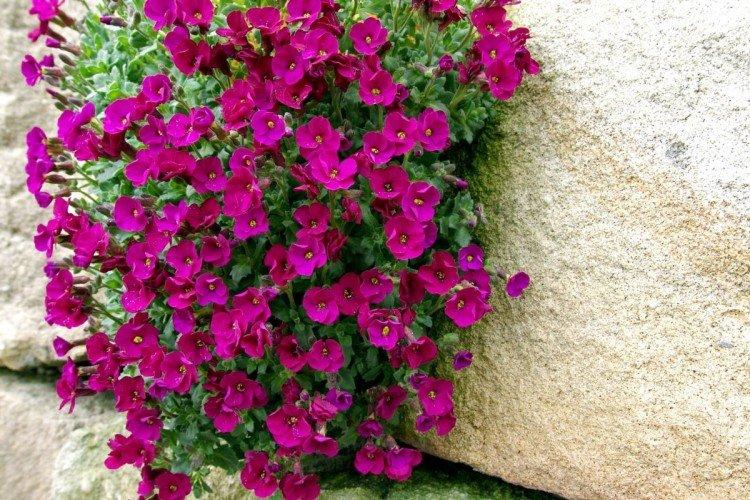
Wintering
After flowering, cut off all stems and most of the shoots. For the winter, cover the shave with spruce branches or leaves, but immediately remove the shelter in early spring so that the melt water does not stagnate. We advise you to dig grooves in advance for its drain.
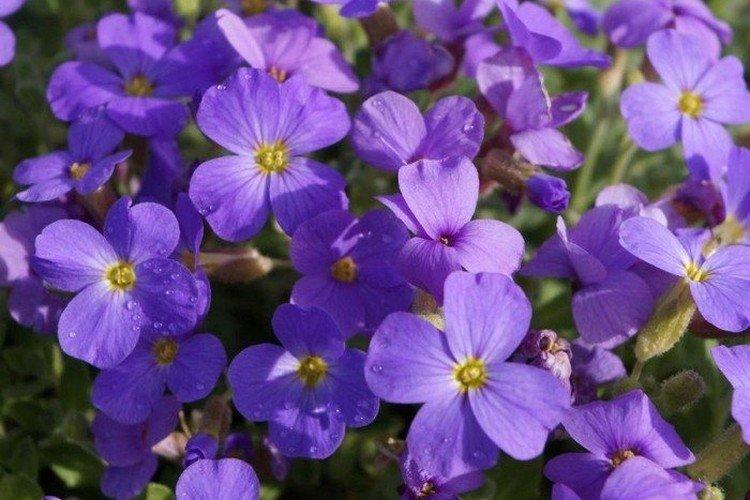
Planting and breeding obriety
The easiest way to propagate is by seed. They can be sown directly into open ground in April or September to a depth of 1.5 cm and covered with sand. Or germinate seedlings in February immediately in peat tablets without preliminary preparation.They germinate up to 4 weeks.
By mid-May, after 2 weeks of hardening, the obrieta can be transplanted into the open ground in steps of 5-10 cm. Do this directly with peat pots, because the root system is very sensitive. Such seedlings will bloom only next year.
In summer, Aubrieta is propagated by apical cuttings without inflorescences. They are rooted directly in a wet substrate with a cap, and by the end of summer a full-fledged root system will have formed. Immediately transplant the plant with an earthen clod to a permanent place so that it takes root until winter. But we do not recommend multiplying by division - Aubrieta does not tolerate this procedure well.
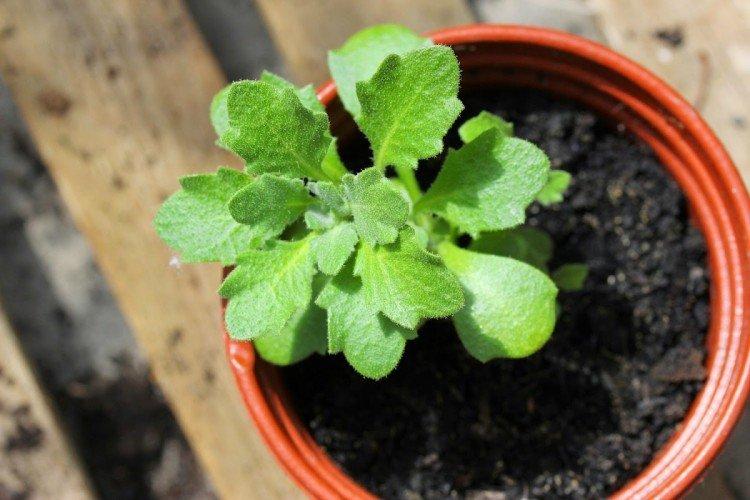
Pest and disease control
Like all creeping, but dense plants, Aubrieta is sensitive to fungus due to high humidity and thickening of the planting. This is especially true for seedlings, so always be careful with watering. Powdery mildew, spotting, root rot - in the early stages, all this is treated with fungicides and correction of care.
Of the pests, aphids are most fond of aphids, and slugs and snails willingly hide under a thick carpet. In the first case, use insecticides, and in the second, it is better to place traps and repellents in advance. By the way, ash will come off instead of a scarer.
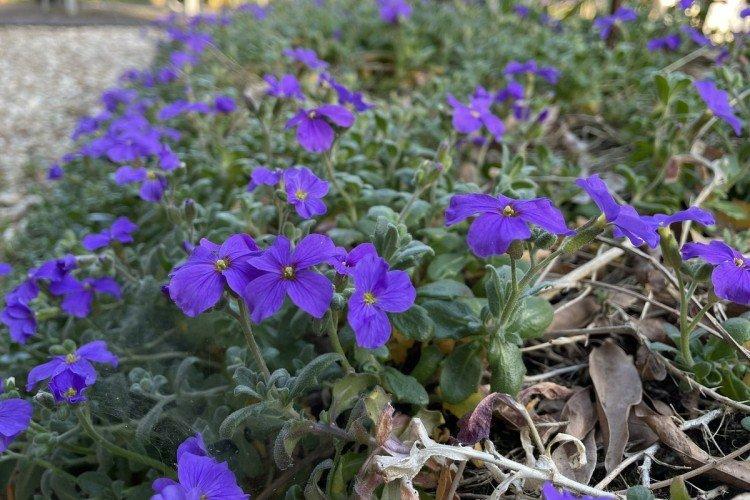
Aubrieta - photo
Aubrieta is grown as you like and anywhere, and it is especially good on alpine slides. Just look at this riot of color!
